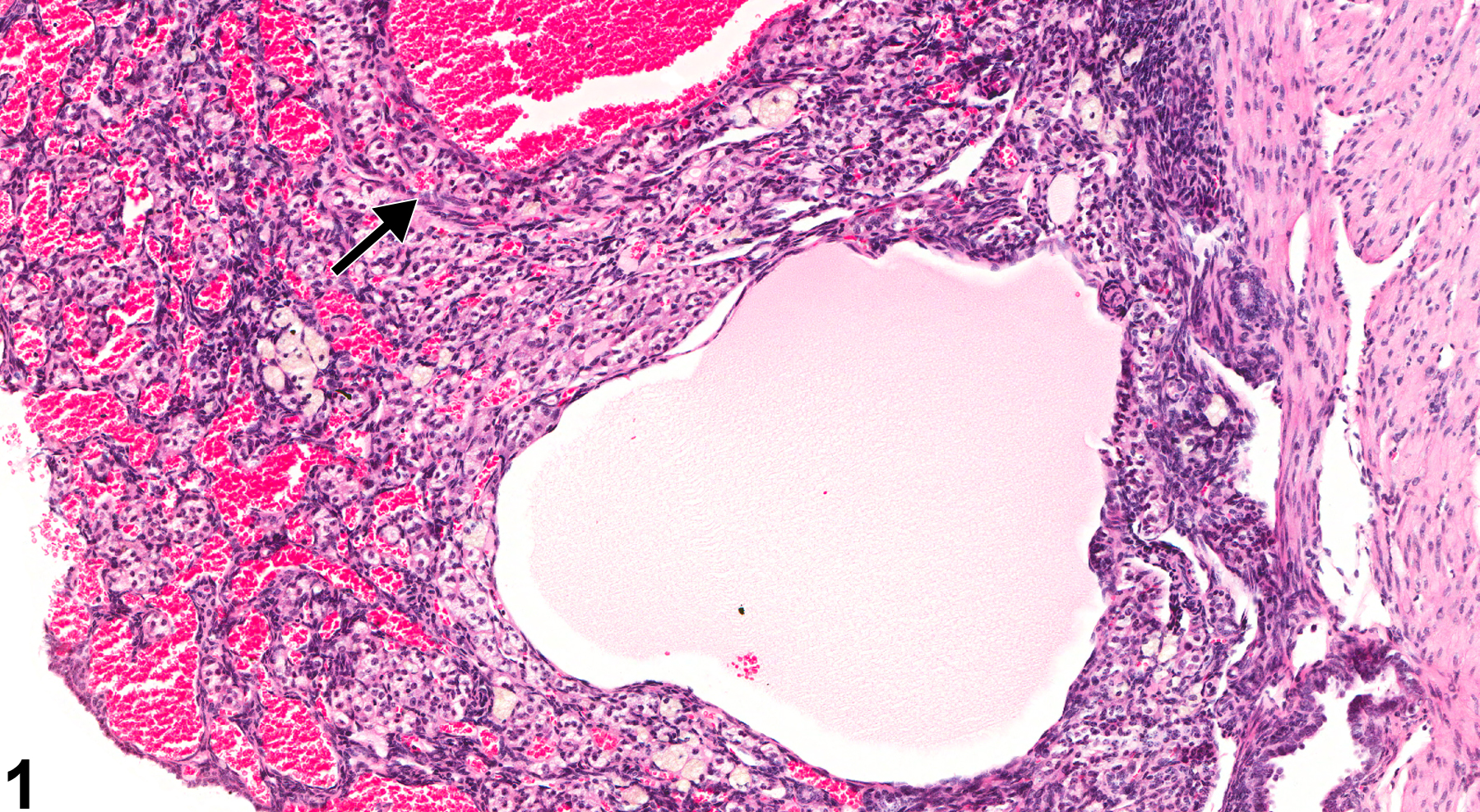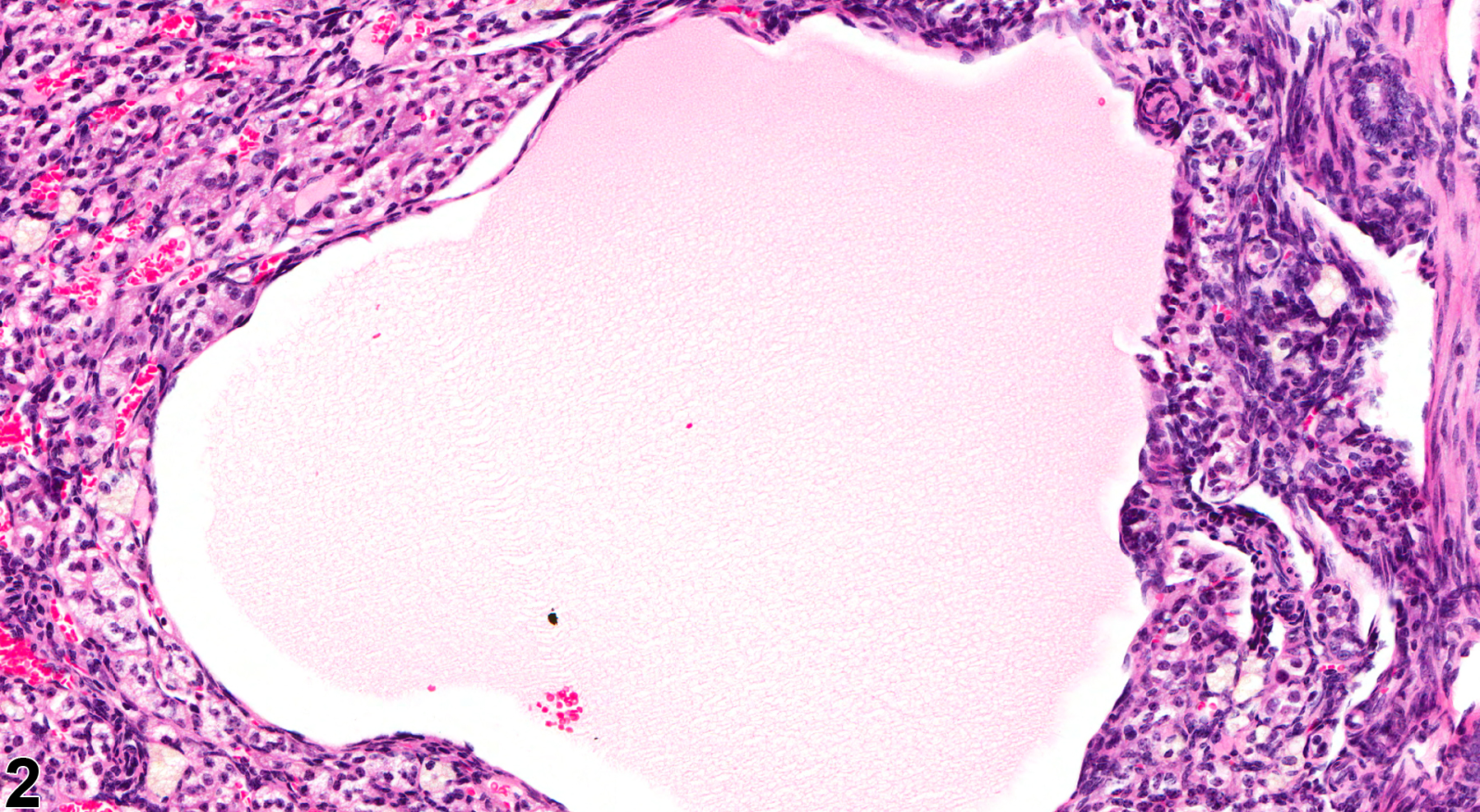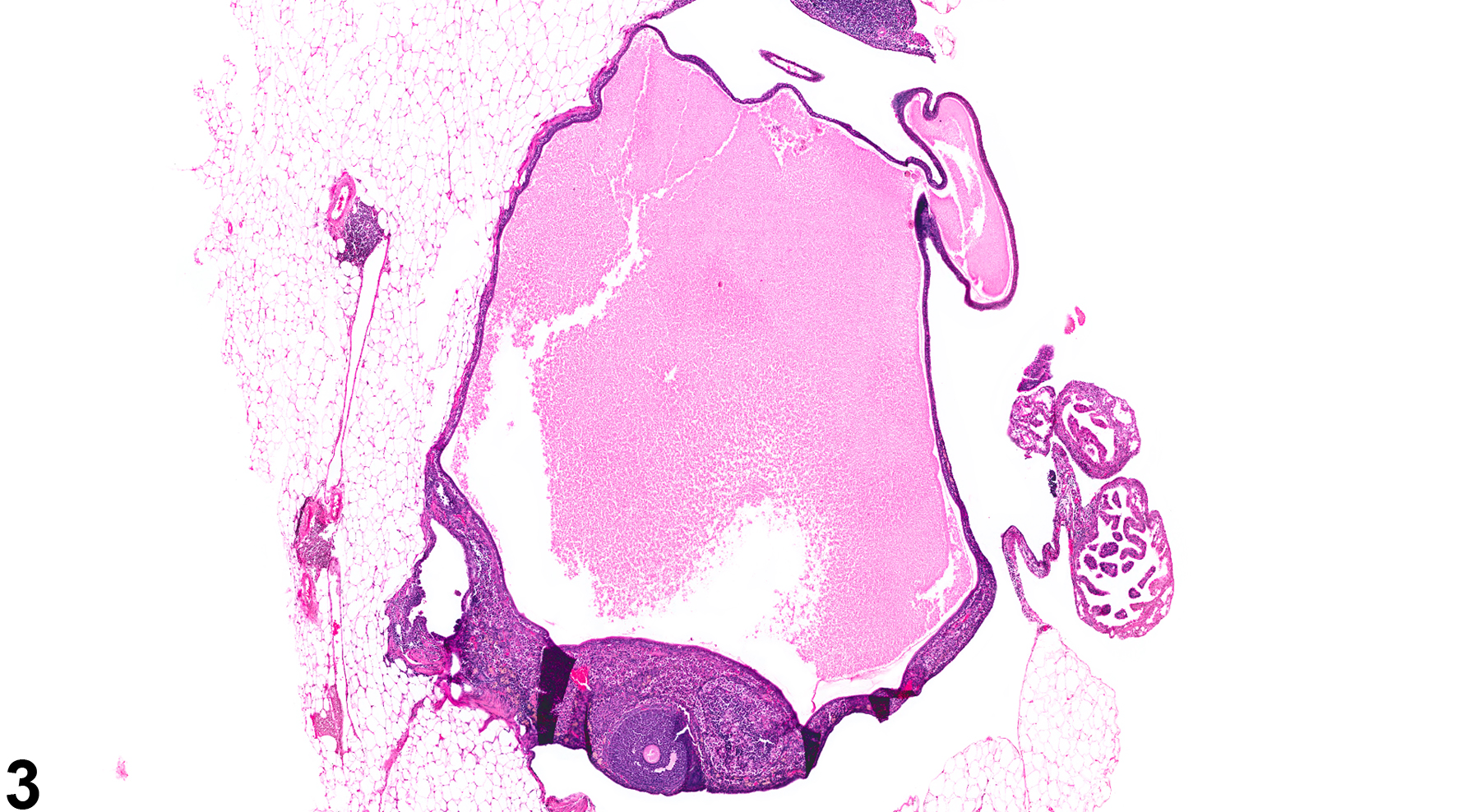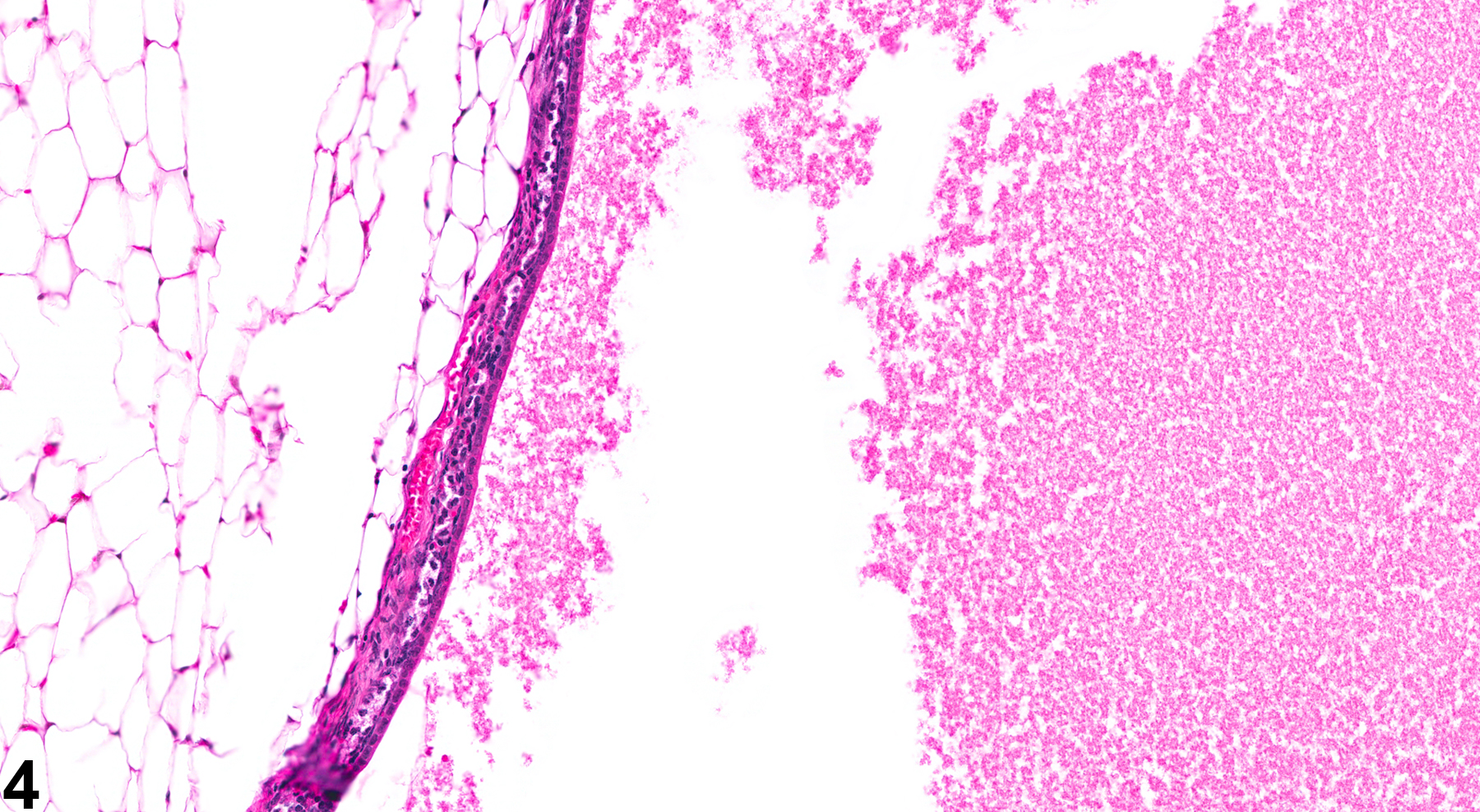Reproductive System, Female
Ovary - Cyst
Narrative
Ovarian cysts are a common finding in rats and mice (Figure 1, Figure 2, Figure 3 and Figure 4). Ovarian cysts may be unilateral or bilateral, single or multiple, and may become quite large. Ideally, cysts should be classified by origin, location, and/or morphologic appearance (follicular, luteal, epithelial, rete ovarii, bursal, paraovarian), which may provide information as to pathogenesis in toxicity or carcinogenicity studies. However, origin may be difficult to assign because the size and number of cysts increase with age, and the walls become so thin that identifying features are lost. The pathogenesis of ovarian cysts is often unknown; however, in mice some of them may be of mesonephric duct origin.
Ovary - Cyst should be diagnosed but not assigned a severity grade. Whenever possible, the type of cyst (follicular, luteal, epithelial, rete ovarii, bursal, paraovarian) should be included in the diagnosis as a modifier. The diagnosis of Ovary - Cyst, with no modifier, is reserved for those instances when the origin of the cyst cannot be determined.
Alison RH, Morgan KT, Montgomery CA. 1990. Ovary. In: Pathology of the Fischer Rat: Reference and Atlas (Boorman GA, Eustis SL, Elwell MR, Montgomery CA, MacKenzie WF, eds). Academic Press, San Diego, CA, 429-442.
Davis BJ, Dixon D, Herbert RA. 1999. Ovary, oviduct, uterus, cervix and vagina. In: Pathology of the Mouse: Reference and Atlas (Maronpot RR, Boorman GA, Gaul BW, eds). Cache River Press, Vienna, IL, 409-444.
Dixon D, Heider K, Elwell MR. 2001. Incidence of nonneoplastic lesions in historical control male and female Fischer-344 rats from 90-day toxicity studies. Toxicol Pathol 23:338-348.
Abstract: https://www.ncbi.nlm.nih.gov/pubmed/7659956Faccini JM, Abbott DP, Paulus GJJ. 1990. Female genital tract. In: Mouse Histopathology: A Glossary for Use in Toxicity and Carcinogenicity Studies (Greaves P, Faccini JM, eds). Elsevier, Amsterdam, 147-168.
Greaves P. 2012. Female genital tract. In: Histopathology of Preclinical Toxicity Studies: Interpretation and Relevance in Drug Safety Evaluation, 4th ed. Elsevier, Amsterdam, 667-724.
Long GG. 2002. Apparent mesonephric duct (rete anlage) origin for cysts and proliferative epithelial lesions in the mouse ovary. Toxicol Pathol 30:592-598.
Abstract: https://www.ncbi.nlm.nih.gov/pubmed/12371668Maekawa A, Maita K, Harleman JH. 1996. Changes in the ovary. In: Pathobiology of the Aging Mouse (Mohr U, Dungworth DL, Capen CC, Carlton WW, Sundberg JP, Ward JM, eds). ILSI Press, Washington, DC, 451-467.
Maekawa A, Yoshida A. 1996. Susceptibility of the female genital system to toxic substances. In: Pathobiology of the Aging Mouse, Vol 1 (Mohr U, Dungworth DL, Capen CC, Carlton WW, Sundberg JP, Ward JM, eds). ILSI Press, Washington, DC, 481-493.
Montgomery CA, Alison RH. 1987. Non-neoplastic lesions of the ovary in Fischer 344 rats and B6C3F1 mice. Environ Health Perspect 73:53-75.
Abstract: https://www.ncbi.nlm.nih.gov/pmc/articles/PMC1474552/National Toxicology Program. 1993. NTP TR-404. Toxicology and Carcinogenesis Studies of 5,5-Diphenylhydantoin (CAS No. 57-41-0) (Phenytoin) in F344/N Rats and B6C3F1 Mice (Feed Studies). NTP, Research Triangle Park, NC.
Abstract: https://ntp.niehs.nih.gov/go/7688Peluso JJ. 1992. Morphologic and physiologic features of the ovary. In: Pathobiology of the Aging Rat (Mohr U, Dungworth DL, Capen CC, eds). ILSI Press, Washington, DC, 337-349.

Ovary - Cyst in a female B6C3F1/N mouse from a chronic study. The cyst is adjacent to a hematocyst (arrow), which contains blood.





